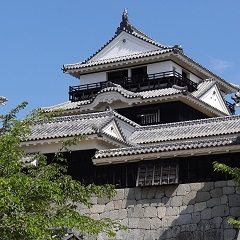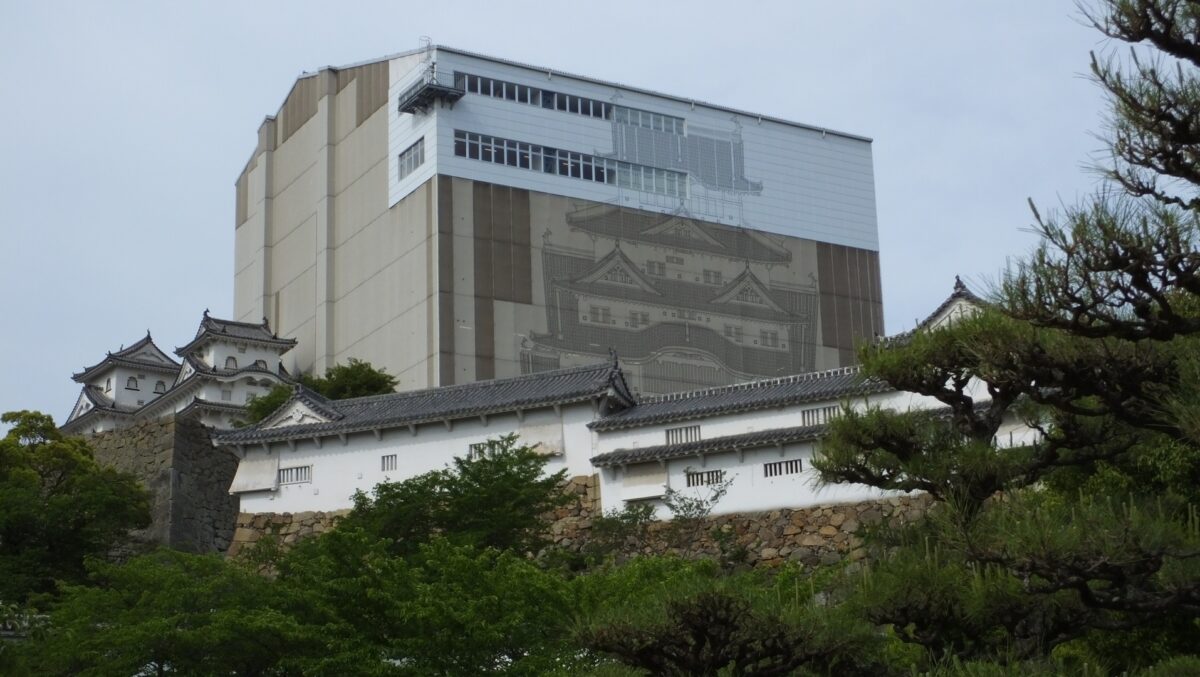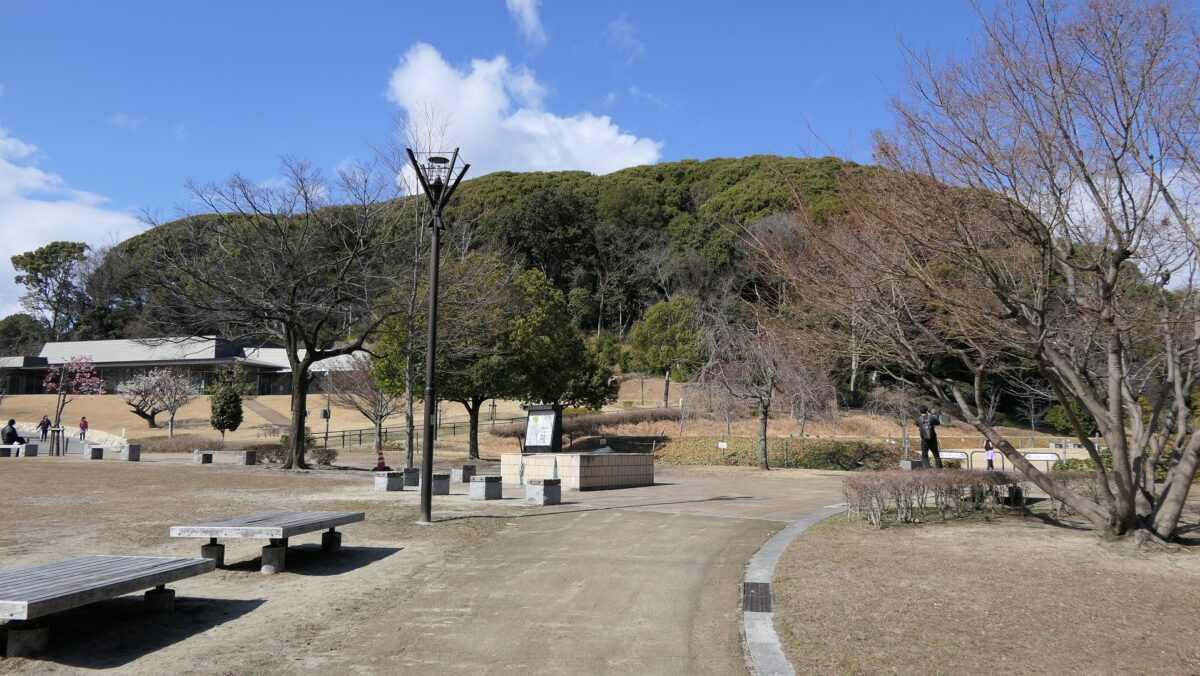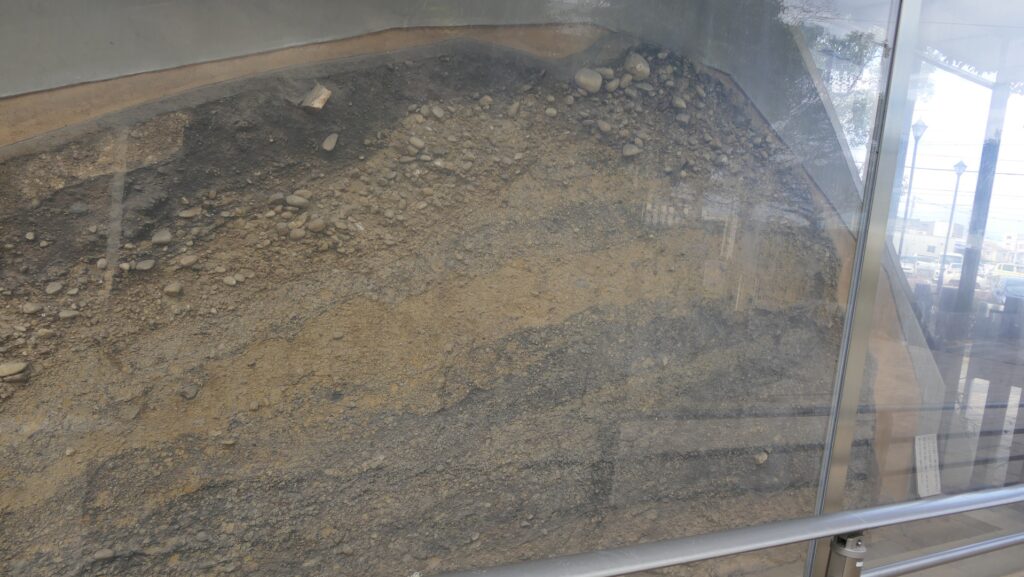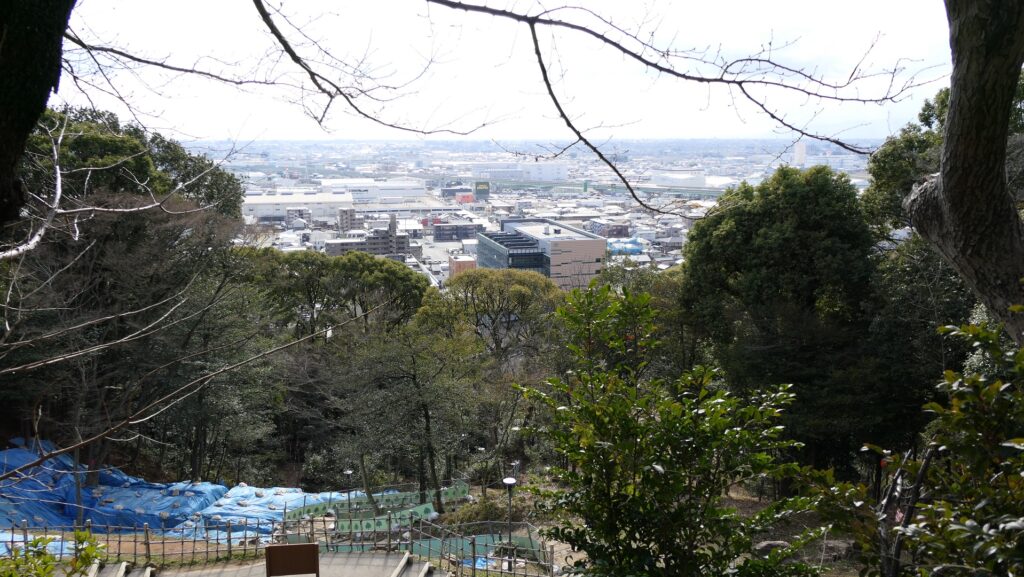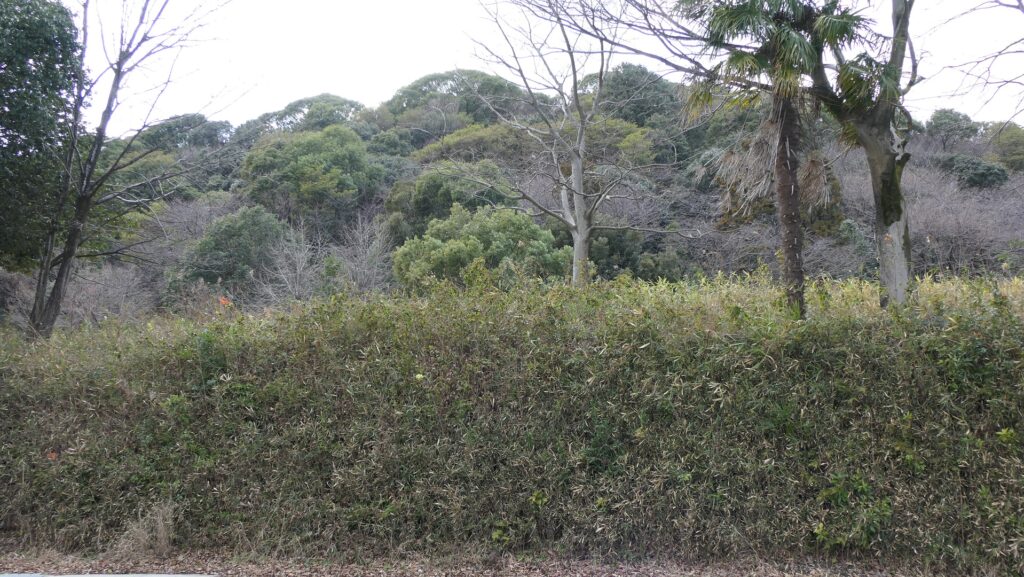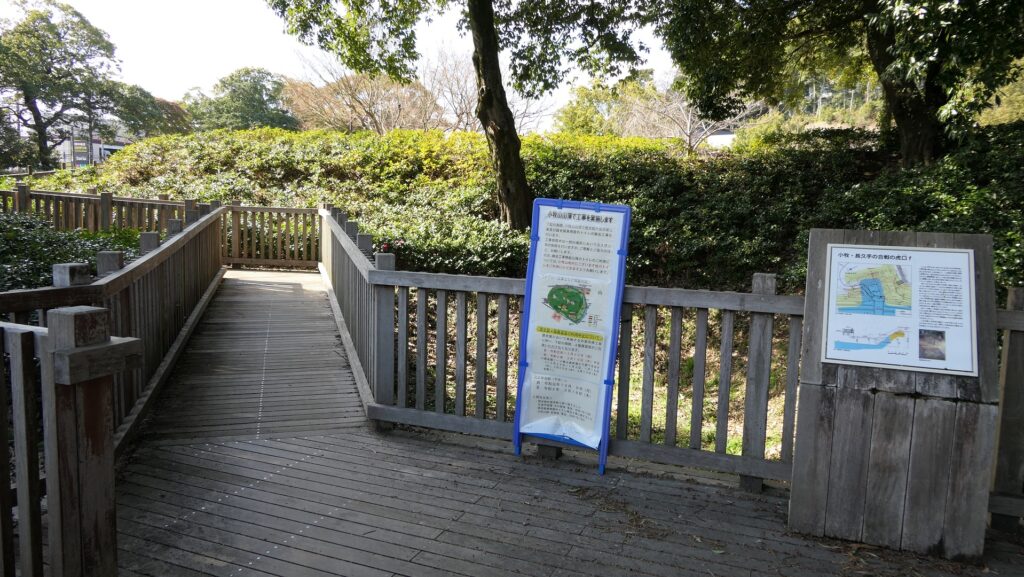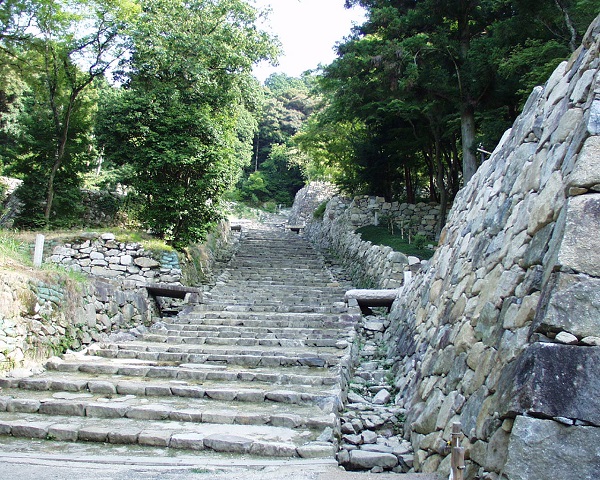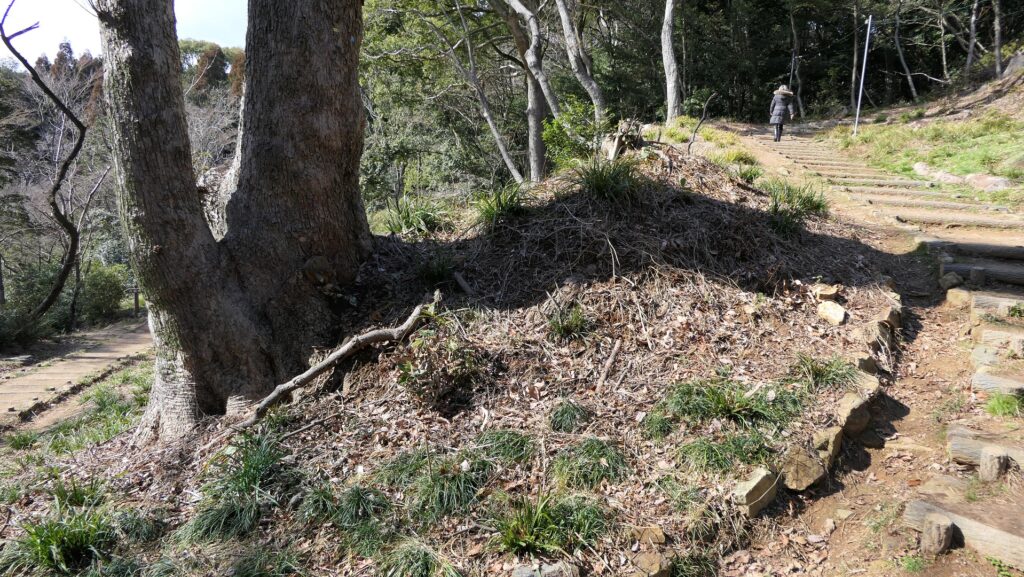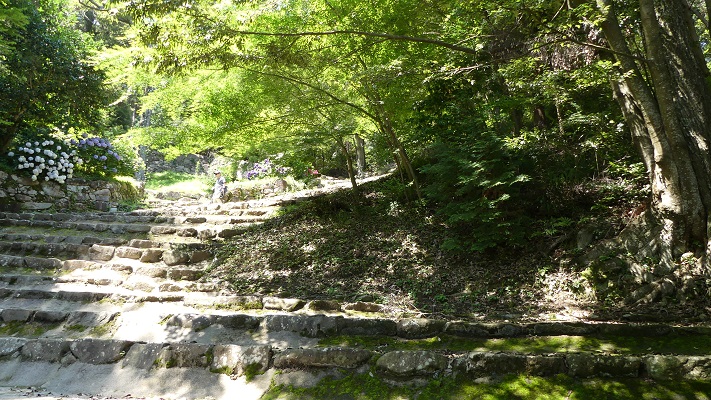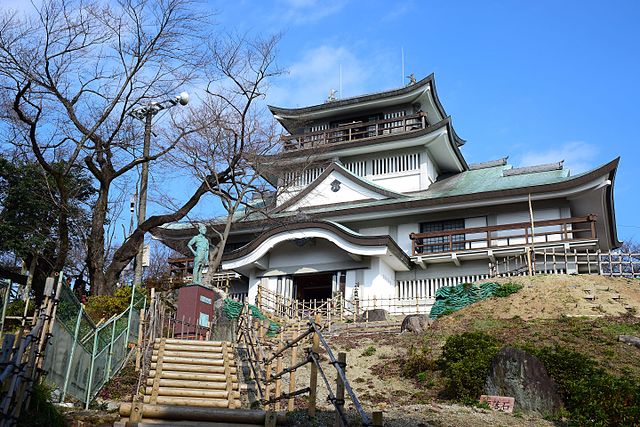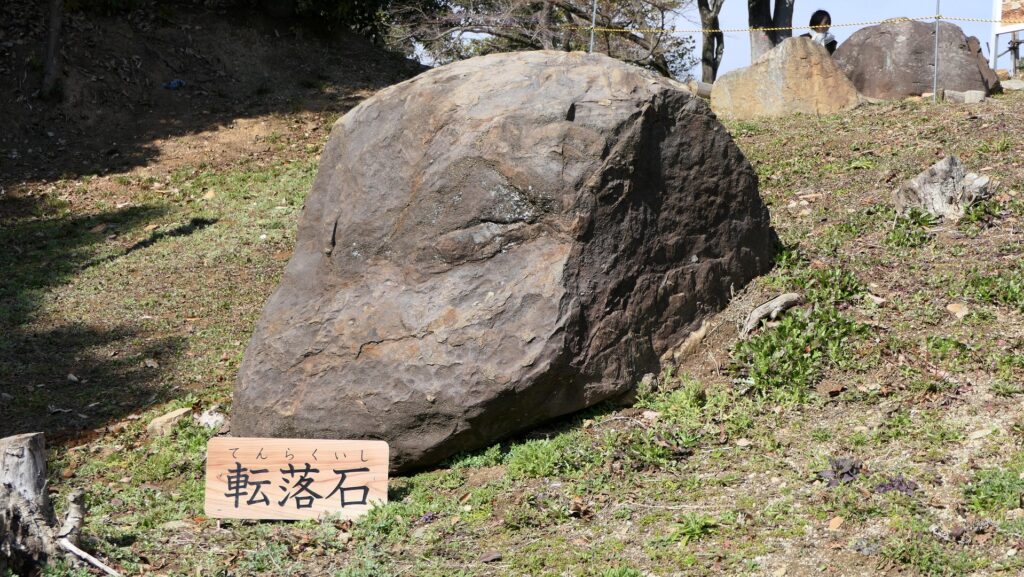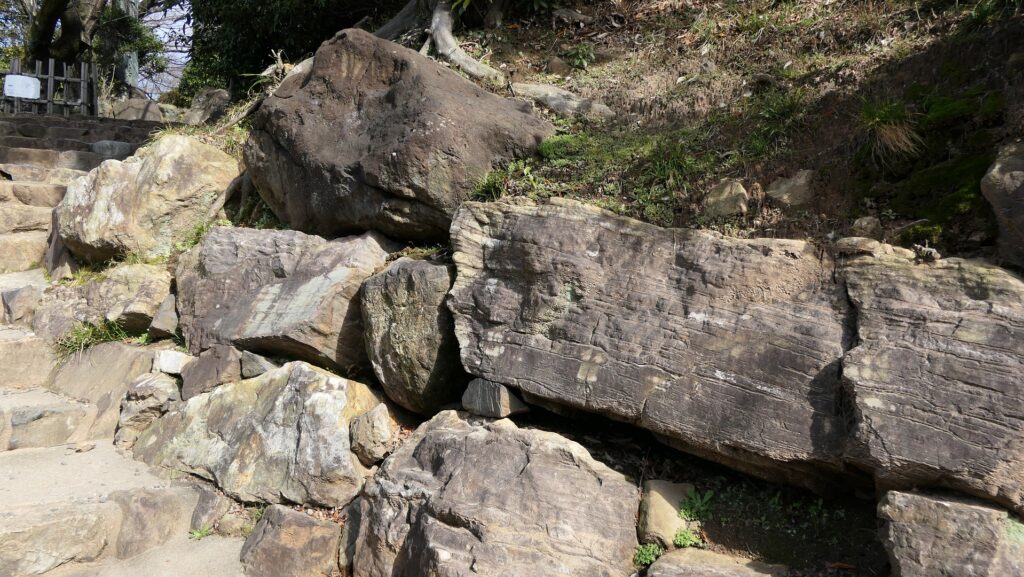Features (West Enclosure)
The West Enclosure is located on Sagiyama mountain, the southwest of the Main Towers. It was lastly improved by Tadamasa Honda, when he was married to Senhime, the daughter of Ieyasu Tokugawa, the founder of the Tokugawa Shogunate. The enclosure has large space and the Roofed Passage Turret where you can enter. You can also see equipment for battles such as machicolations as well as rooms for women who might have served Senhime. The view of the Main Towers from this enclosure looks very elegant.
The map around the castle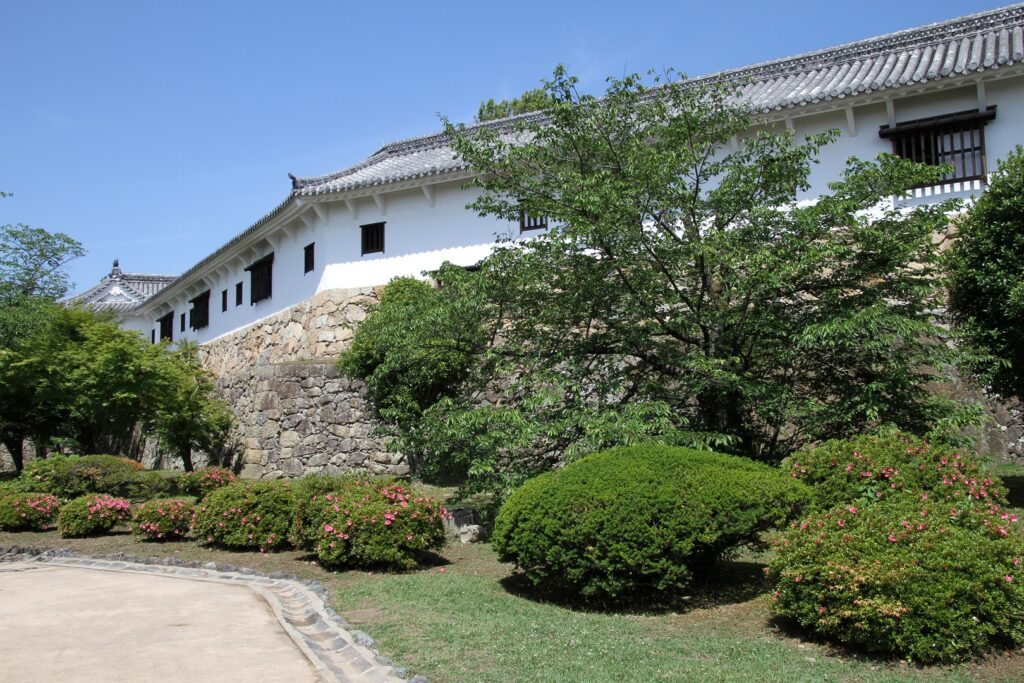
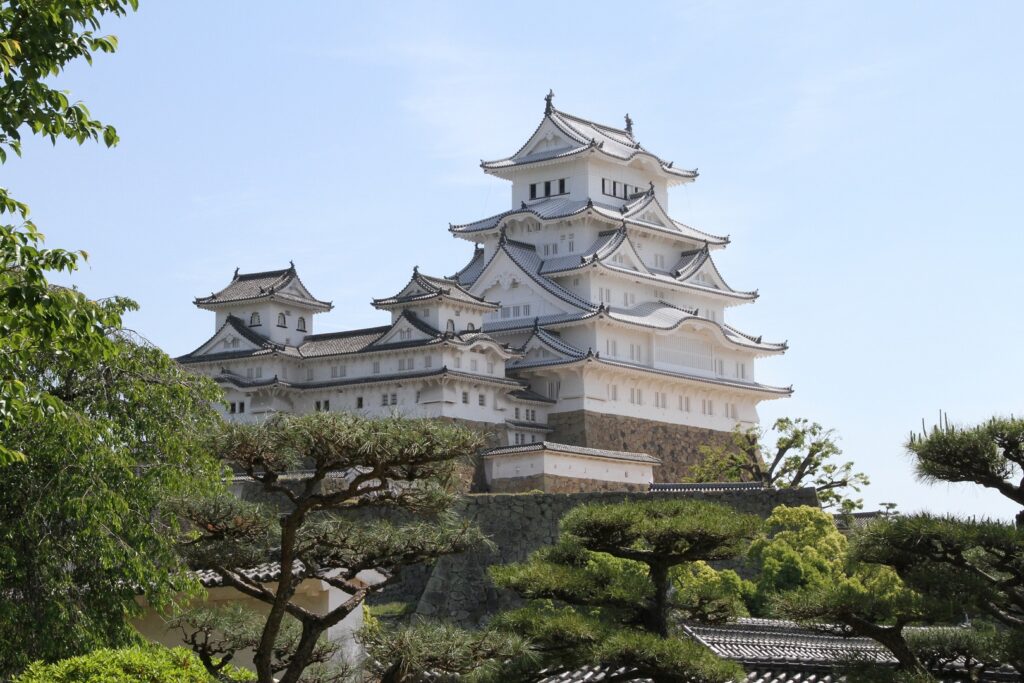
My Impression
I think Himeji Castle looks much better with surrounded by natural terrain. For example, the Main Tower buildings are beautiful by themselves, but the buildings could be more beautiful with the mountain and the natural materials from which the towers were originally built.
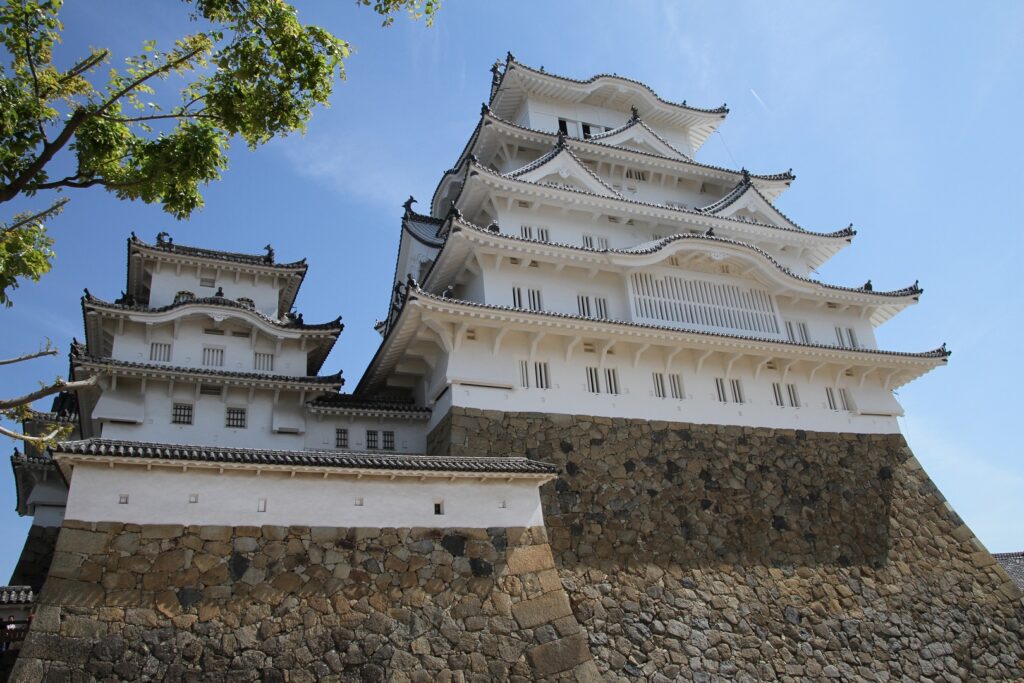
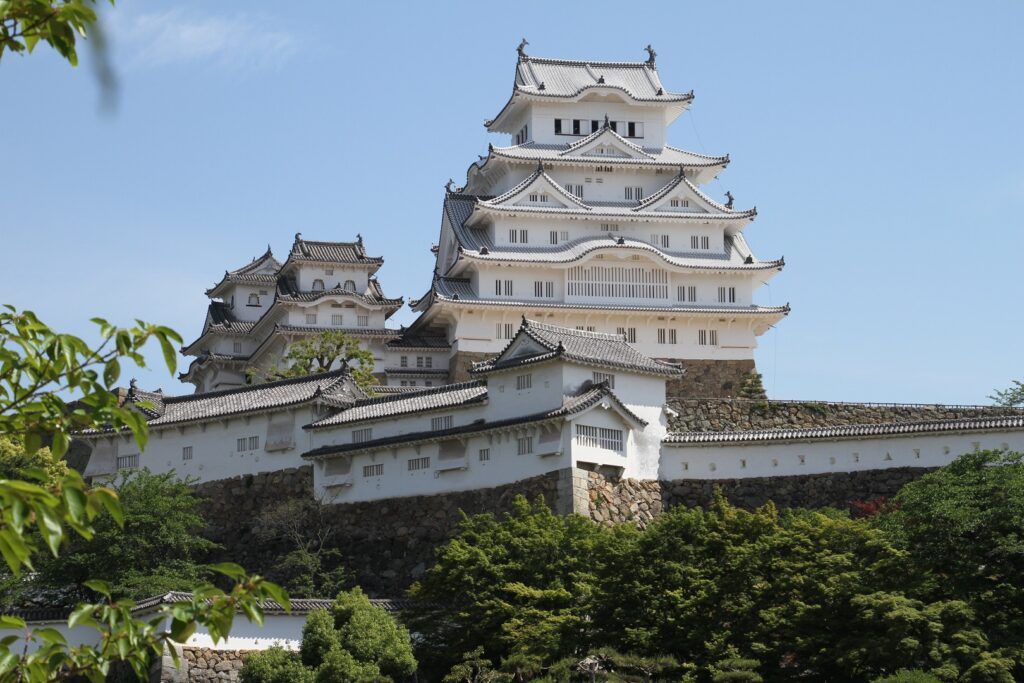
In addition, when I visited the castle in 2013, I had a unique experience. The castle was undergoing repairs under The Heisei Great Repairs. The Large Main Tower was hidden behind construction covering. However, visitors could enter the construction site to see the tower close-up. I saw the roof top of the tower being painted with thick plaster among the roof tiles. The thickness of the plaster at the castle is 3cm, which is thicker than the past. This is to protect against the harsh weather. Even now, castles are trying to survive into the future.
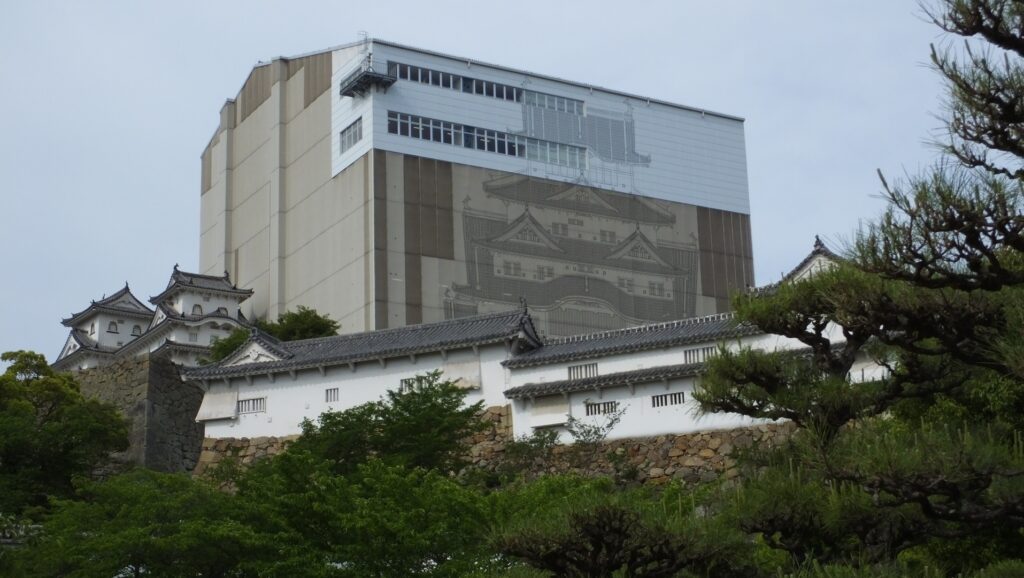
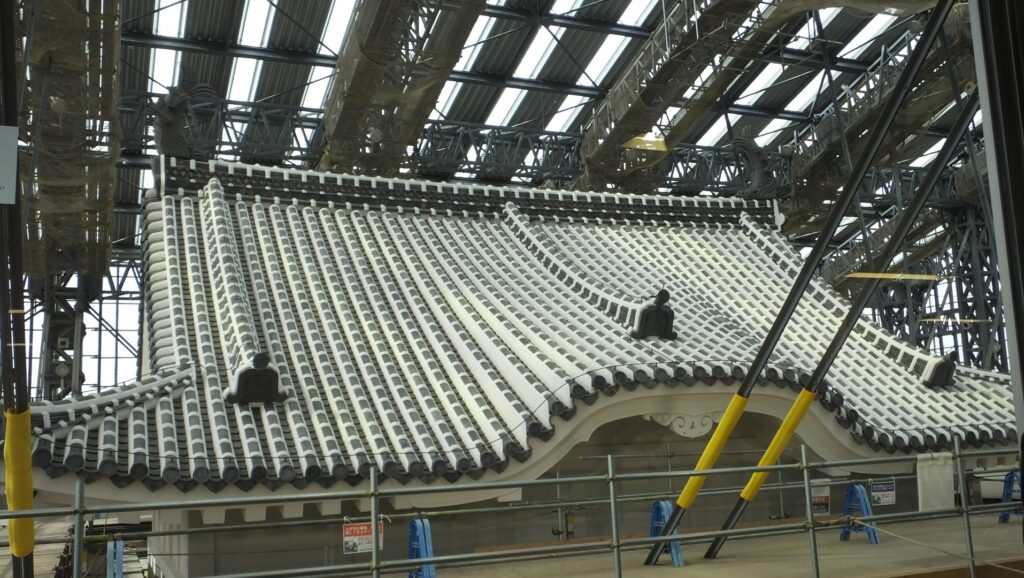
How to get There
If you want to visit by car: It takes about 15 minutes from the Hanada IC or Tohori Ramp on the Bantan renraku Road. The are several parking lots around the castle.
From Himeji Station: Take the Himeji Castle Loop Bus from the Himeji-ekimae stop in front of the north exit of the station and get off at the Himeji-jo Otemon-mae stop. Or it takes about 20 minutes on foot from the station.
Links and References
・Himeji Castle Official Website
That’s all.
Back to “Himeji Castle Part1”
Back to “Himeji Castle Part3”
